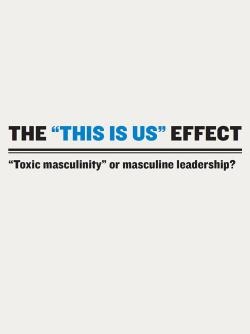Abortion: The Real Story, Part 2
The number of people realizing the truth about abortion is growing. Is there hope for those who have already made the mistake of having an abortion?
In the last edition of Tomorrow’s World, we explored some of the complex issues regarding abortion. We read how Dr. Bernard Nathanson, Lawrence Lader and others deceptively sold abortion on demand to America and much of the world. We read Dr. Nathanson’s confession, and how he and others fed falsely inflated statistics to the media about the number of backroom abortions and resulting deaths, to stir up sympathy for permissive abortion. We saw how the media distorts the truth, suppressing the fact that a high percentage of Americans are against abortion. This is especially true of millennials—those roughly between the ages of 18 and 35—but one would never know this based on the smoke screen of leftist media bias.
We also learned that some of the most outspoken pro-abortionists later changed sides to become leaders in the pro-life movement. Among them were Dr. Nathanson and Norma McCorvey—a.k.a. Jane Roe, of the Roe v. Wade Supreme Court decision legalizing abortion. Carol Everett, who at one time ran five abortion clinics, now speaks out against the abortion industry; and former abortion doctor, Dr. Anthony Levatino, also changed sides.
We also noted that monetary profit is a driving force in the abortion industry, but also—and just as importantly—many are motivated by a misguided sense that they are helping women. And bias against God and religious people contributes to a distorted worldview.
Before exploring this subject in more detail, I want to remind the reader that neither this article nor the one that preceded it are intended to condemn anyone. Our purpose is to impart knowledge and show that there is hope. However, it would be wrong to say that abortionists, those who have had abortions, and those who support the practice or fail to speak up when it is appropriate to do so, are without guilt before God. Abortion is murder! But even murder can be forgiven, and there is hope and release from guilt, which we will see later in this article.
Changing Sides
Let us look more deeply into the stories of men and women who were once pro-abortion but who experienced an awakening and became pro-life. And let us see that there is hope for both the abortionists and those who have made a decision they have come to regret, whether that decision was to perform abortions, have an abortion, or encourage an abortion. The stories of those who moved from killing lives to saving lives are all different, but all are compelling.
Linda Couri had an abortion at age 24 and was relieved that her problem disappeared—or so she thought. She went on to work for Planned Parenthood, thinking that she was doing the compassionate thing by counseling young women. However, when asked the question “Is it a baby?” by a frightened 16-year-old, there was a struggle within her. Should she tell the truth, “Yes, of course it’s a baby” (her words), or should she give a truthful, but misleading answer: “It’s the product of conception”? She gave the party line, but then needed reassurance from a colleague that what she did was right. There was a struggle within her. Other guilt-causing incidents occurred, and eleven years after her own abortion, she realized that she had made a terrible mistake.
Dr. Anthony Levatino was co-owner of what was at one time the only OB-GYN clinic in several counties in the state of New York that performed D&E (Dilation and Evacuation) abortions for second-trimester babies. His awakening came when his own young adopted daughter was hit by a car and killed. That terribly tragedy awakened him. He connected the dots between his work at the clinic and the value of a human life. He realized that he was going down the wrong road—so he stepped off of it.
These stories and those of others all seem to have a few things in common. For example, their worldviews on the matter of abortion were formed and shaped by the culture and media around them. As quoted in my previous installment on this subject, Levatino explained it this way: “Everybody in the abortion industry knows that everyone involved in the pro-life movement is a kook. I know, because CNN tells me so, and they would never lie to me.”
Many also deceive themselves into believing they are doing the compassionate thing. ProLifeAction.org reported Levatino’s testimony in this regard:
I’ve heard many times from other obstetricians: Well, I’m not really pro-abortion, I’m pro-woman. How many times have you heard that one? The women’s groups in this country, they’re not alone, but they’ve done a very good job selling that bill of goods to the population. That somehow destroying a life is pro-woman. But a lot of obstetricians use that justification to themselves, and I can tell you, a lot of them believe it. I used to. It’s not hard to be convinced of it.
Linda Couri came from that worldview. We may abhor the destruction of human life in the womb, but we must understand how it is that many routinely participate in this activity during the day and still sleep at night. Their education from childhood included a strong secular value system. It is instructive to read how Ms. Couri described her early worldview at a 2012 conference called “CONVERTED: From Abortion Provider to Pro-Life Activist”:
As a young person I really valued freedom above all else…. And I also viewed religion, particularly Christianity… as being cruel, and stupid, really. I saw people on that side of the fence as being judgmental, boring, shallow, and anti-intellectual. So I didn’t want to be anything like them at all. I thought they were quite pathetic. And so I didn’t even want to consider their opinions. To me, religious people didn’t seem to be engaged in what I thought as “the real world.” Religious people were in some sort of weird fantasy world. Not just pro-life people, but all religious people were kooks as far as I was concerned. So that’s kind of the template that I’m coming from.
Another Defector
Kathi Aultman, M.D., testified against abortion before a Senate Judiciary Committee hearing on March 15, 2016. Dr. Aultman was not always against abortion. She personally performed first and second trimester abortions and she herself had one. She came into the abortion industry with a similar worldview to that of Linda Couri. Here is her recorded testimony:
At the time I entered medical school I believed that the availability of abortion on demand was an issue of women’s rights. I felt that a woman should have control over her body and not be forced to bear a child she didn’t want. My commitment to women’s issues was strengthened as I was exposed to the discrimination inherent in medical school and residency at that time, and to the plight of the indigent women we served in our program. I also believed it was wrong to bring unwanted children into an overpopulated world where they were likely to be neglected or abused.
She went on to explain to the Committee how she received dilation-and-evacuation training to perform second trimester procedures. She explained, “the fetus is crushed and removed in pieces.” To fully understand what followed in her testimony, I will refer back to my previous article where I quoted from the BabyCentre, a popular U.K. website that describes, week by week, the development from conception to birth. It describes this for week ten:
Your baby is now officially a fetus! She’s poised for growth and will more than double in size in the next three weeks. Your baby is now swallowing and kicking, and all her major organs are fully developed. More minute details are appearing too, such as fingernails and a little fuzz of hair on her head. Your baby’s sex organs are beginning to show. At your dating scan, which should happen soon, you may be able to tell whether you’re going to have a boy or a girl (“Your Pregnancy at 10 Weeks.” BabyCentre.co.uk, November 2016).
The tenth week is still first trimester, so when Dr. Aultman speaks of the second trimester, she is working with a baby whose major organs are fully developed. Here is more of her startling testimony before the U.S. Senate:
After each procedure I had to examine the tissue carefully to account for all the body parts to make sure nothing was left to cause infection or bleeding. I was fascinated by the tiny but perfectly formed intestines, kidneys, and other organs and I enjoyed looking at their amazing cellular detail under the microscope. I realize it is hard to imagine someone being able to do that and be so detached but because of my training and conditioning a human fetus seemed no different than the chick embryos I dissected in college. I could view them with strictly scientific interest devoid of any of the emotions with which I would normally view a baby. I wasn’t heartless I just had been trained to compartmentalize these things. If I had a woman come in with a miscarriage or a stillbirth and she had wanted the baby, I was distraught with her and felt her pain. The difference in my mind was whether the baby was wanted or unwanted.
However, as have others, Dr. Aultman ran into her own crisis of conscience: “I personally didn’t have any concern or remorse about having had an abortion until after I had my first child. It was then that I mourned the child that would have been.” She lists three distinct incidents following the birth of her child that connected the dots for her between a fetus and a child. Only then did she come to value the human life involved.
These examples are not isolated. Dr. Aultman testified, “I found out later that few doctors are able to do abortions for very long…. Although many people view an abortion as just removing a blob of tissue, the abortionist knows exactly what he or she is doing because they must count the body parts after each procedure. Eventually the truth sinks in and if they have a conscience they can no longer do them.”
The Millennial Generation is currently the most pro-life of all groups, according to a number of surveys, but they are not looking at this from a religious perspective. Thanks to technology that allows us to look inside the womb at an early stage, they have, without realizing it, come to the same conclusion as an ancient king who credited the Divine for the marvel of life: “For You formed my inward parts; You covered me in my mother’s womb. I will praise You, for I am fearfully and wonderfully made; marvelous are Your works, and that my soul knows very well” (Psalm 139:13–14).
Dealing with the Trauma
The Bible does not sanitize the lives of its heroes—it displays them on its pages honestly. We learn about the mind of God and His compassion for us through their lives. Two individuals stand out as examples of God’s love, compassion and willingness to accept anyone who truly repents of past mistakes. The first is a man named Saul, who severely persecuted the fledgling Christian Church.
Saul, whose name was eventually changed to Paul, confesses the kind of man he was prior to his moment of truth. “[M]any of the saints I shut up in prison, having received authority from the chief priests; and when they were put to death, I cast my vote against them. And I punished them often in every synagogue and compelled them to blaspheme; and being exceedingly enraged against them, I persecuted them even to foreign cities” (Acts 26:10–11). What caused the transformation that took place in Saul’s life?
Saul was struck down and blinded by a great light on his way to Damascus. He could not see for three days. At the end of that time, God sent Ananias to pray and lay hands on him, and “Immediately there fell from his eyes something like scales, and he received his sight at once; and he arose and was baptized” (Acts 9:18). He stopped persecuting the Church from that day forward and became a zealous servant of Christ.
Israel’s ancient king David also stands out as one who committed grievous sins. He allowed himself to become caught up in adultery, and then tried to cover it with lies and murder. His moment of truth came when the prophet Nathan confronted him regarding this despicable behavior (2 Samuel 12).
David came to grips with the depth of his sins, confessed them and deeply repented of them. Psalm 51 contains his prayer of repentance to God. He recognized that nothing he could do would alter his past deeds. He realized that sacrifices and penance as a means to wipe the slate clean of sin would mean nothing to God. He wrote, “For you do not desire sacrifice, or else I would give it; You do not delight in burnt offering. The sacrifices of God are a broken spirit, a broken and a contrite heart—these, O God, You will not despise” (Psalm 51:16–17).
David realized how helpless he was and that only God can remove the stain of sin. Another of his psalms makes the point: “Blessed is he whose transgression is forgiven, whose sin is covered. Blessed is the man to whom the Lord does not impute iniquity” (Psalm 32:1–2).
Ultimately, God gave us the gift of His Son, providing a clear path to freedom from the guilt of sin. As the Apostle Peter explains, “you were not redeemed with corruptible things, like silver or gold, from your aimless conduct received by tradition from your fathers, but with the precious blood of Christ” (1 Peter 1:18–19). And the Apostle John tells us, “If we confess our sins, He is faithful and just to forgive us our sins and to cleanse us from all unrighteousness” (1 John 1:9).
Bernard Nathanson was a prime instrument in selling permissive abortion to America. He was on the ground floor, building a financial empire in a killing industry, directly or indirectly responsible, according to his own reckoning, for some 75,000 tiny lives snuffed out prematurely. Yet he spent the last years of his life trying to accomplish the reversal of the decision he was so instrumental in bringing about—a decision he confessed was based on lies and deception that he had a part in spreading. Nathanson grew up Jewish and described himself as an atheist Jew. He was a man wracked by guilt, and ten years after he became a pro-life advocate he sought forgiveness in professing Christianity.
Carol Everett, Norma McCorvey, Linda Couri, and many, many others have seen the light. Doctors Nathanson, Levatino and Aultman have had the “scales fall from their eyes.” Women have come to regret past decisions. Men also regret their part in pressuring women to destroy the lives they were carrying. Setting abortion aside, it is important for all of us to recognize our own sins and to know that a loving God is willing to forgive.
We all make bad decisions, but what we do after we recognize our errors is what is most important. When Paul realized that the direction he took was, in fact, the wrong way, he repented and was baptized. The Biblical record shows us that his past guilt was removed. Likewise, King David, in spite of his horrendous sins, repented and was forgiven. God will do the same for any of us. No matter how awful our choices may have been, God will forgive us if we seek His solution to the problem!
If you would like counseling, write or call your regional office found on page 4, and we will put you in touch with a caring minister. Don’t live with unresolved guilt when there is a solution. Learn about the great potential that God has in store for you. And, whether or not abortion has been a part of your past, we have three free resources that you may find helpful: two booklets, Christian Baptism: Its Real Meaning and Your Ultimate Destiny, and our telecast titled “Tiny Fingers and Toes.” All can be found at TomorrowsWorld.org. You can also order copies of our booklets from your regional office. Everything we offer is free of charge.






